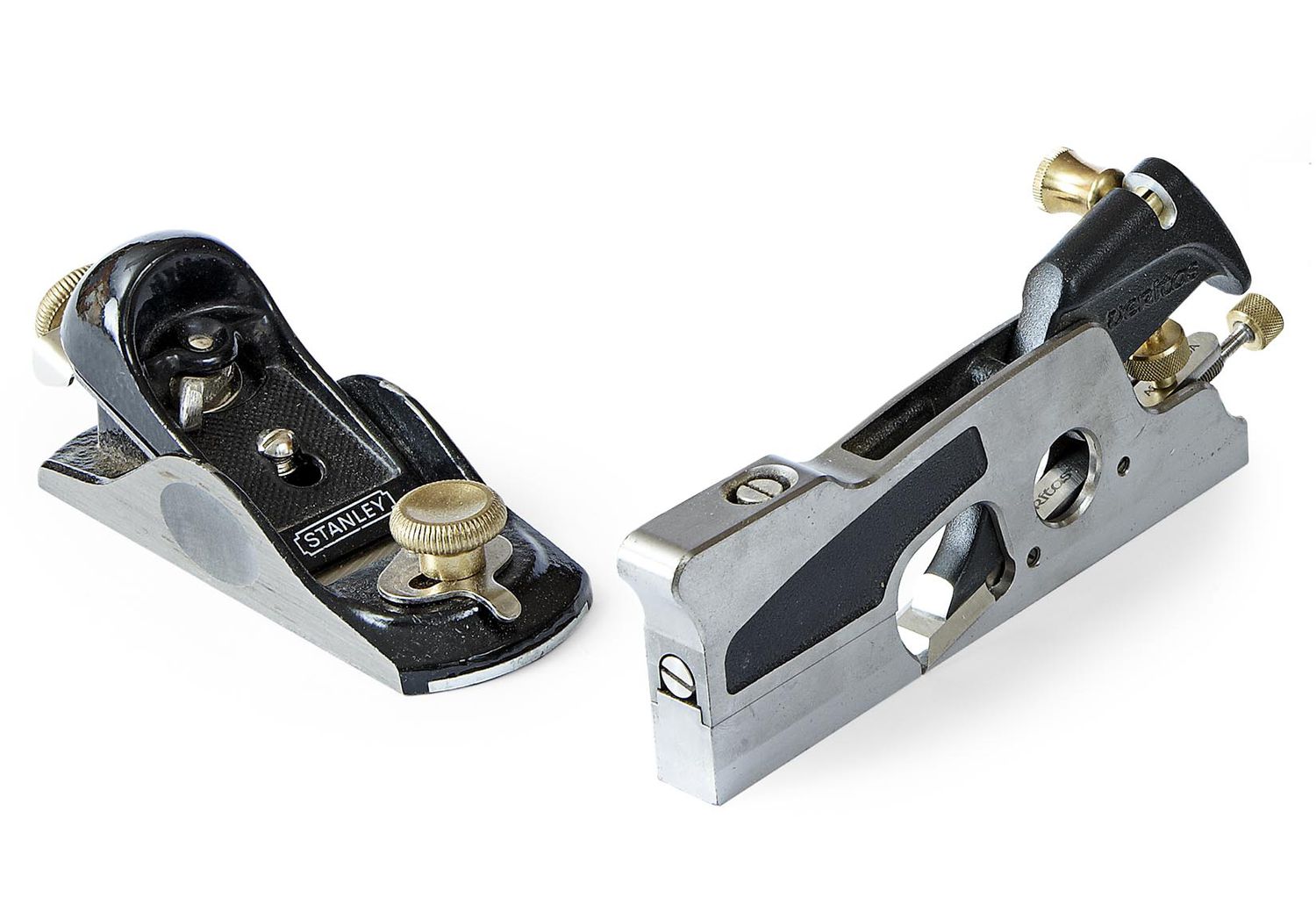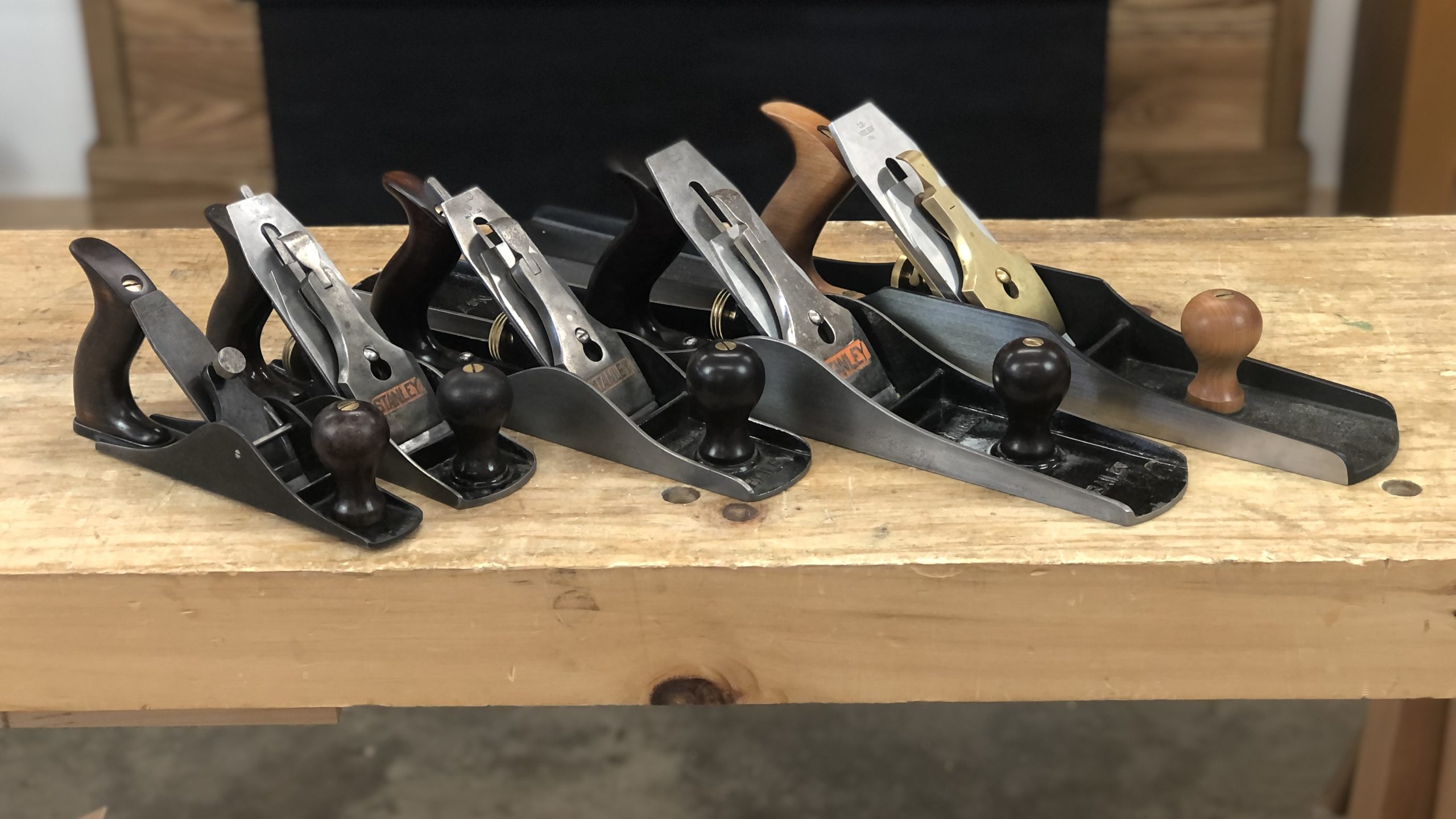Looking to take your woodworking skills to the next level? Wondering which hand planes you should invest in? Well, buckle up because we’re about to dive into the world of woodworking tools and help you find the perfect hand planes for your projects. So, grab your safety glasses and let’s get started!
When it comes to woodworking, a good set of hand planes is like having a trusty sidekick by your side. From smoothing rough surfaces to creating intricate details, hand planes are versatile and essential tools that every woodworker should have in their arsenal. But with so many options available, choosing the right ones can be overwhelming. Don’t worry, though, because we’re here to guide you through the process and help you make an informed decision.
Whether you’re a beginner or a seasoned pro, we’ll break down the different types of hand planes, their uses, and the key factors to consider when buying them. By the end of this guide, you’ll have a clear understanding of which hand planes are best suited for your woodworking needs. So, let’s roll up our sleeves, grab our chisels, and embark on this woodworking adventure together!

Which Hand Planes Should I Buy?
When it comes to woodworking, having the right tools can make all the difference. One essential tool for any woodworker is a hand plane. Hand planes are used to smooth and shape wood, creating straight edges, removing imperfections, and achieving that perfect finish. But with so many options available, it can be overwhelming to decide which hand planes to buy. In this article, we will guide you through the different types of hand planes and help you choose the ones that are right for your woodworking projects.
Understanding the Different Types of Hand Planes
Hand planes come in a variety of shapes and sizes, each designed for a specific woodworking task. Let’s take a closer look at some of the most common types of hand planes:
1. Block Plane
The block plane is a versatile hand plane that is typically used for trimming and chamfering. It has a low-angle blade and a compact size, making it perfect for fine-tuning small areas and end grain. Block planes are also handy for carpentry tasks such as fixing doors and chamfering edges.
When choosing a block plane, look for one with an adjustable mouth and a comfortable grip. A high-quality block plane should have a fine blade adjustment mechanism, allowing for precise control over the cutting depth.
Benefits of using a block plane:
- Easy to maneuver in tight spaces
- Perfect for small-scale and precision work
- Great for removing sharp edges and splintered wood
2. Smoothing Plane
The smoothing plane is essential for achieving a smooth, flawless finish on a workpiece. It is used after the rough shaping and leveling to remove any remaining imperfections and produce a flat and polished surface. Smoothing planes typically have a wide blade and a longer sole, allowing for more surface contact and even scraping action.
When selecting a smoothing plane, opt for one with a flat sole and a well-tuned blade. Look for planes with a comfortable handle that offers a solid grip and minimizes hand fatigue during extended use.
Benefits of using a smoothing plane:
- Creates a silky smooth surface on wood
- Removes any remaining tool marks or tear-out
- Perfects the final finish of your woodworking projects
Choosing the Right Hand Planes for Your Needs
3. Jack Plane
The jack plane is a versatile hand plane that can handle a wide range of woodworking tasks. It is often the go-to tool for rough stock removal, leveling and flattening large surfaces, and preparing lumber for further refinement. The jack plane typically has a longer sole and a slightly curved blade, allowing for efficient material removal.
When choosing a jack plane, look for one with a solid construction and an adjustable frog mechanism. A comfortable handle and a wide blade are also crucial for optimal control and performance.
Benefits of using a jack plane:
- Efficiently removes material from rough lumber
- Levels and flattens large surfaces
- Prepares wood for further refinement with finer hand planes
4. Shoulder Plane
The shoulder plane is a specialized hand plane designed for fine-tuning joinery and creating precise and clean shoulders. It is perfect for trimming and fitting tenons, rabbets, and dadoes. The shoulder plane typically has a narrow body, a thin blade, and a side registration surface that allows for accurate shoulder cuts.
When selecting a shoulder plane, look for one with a robust and sturdy construction. The blade should be sharp and fully adjustable to ensure optimal performance.
Benefits of using a shoulder plane:
- Creates clean and precise shoulders on joinery
- Fits tenons and other joints with accuracy
- Perfects the fit and appearance of joints
5. Router Plane
The router plane is a unique hand plane that is used for cutting, flattening, and smoothing out recesses or grooves in wood. It is particularly useful for tasks such as inlay work, leveling dadoes, and fine-tuning small details. The router plane typically has a flat base with an adjustable blade that protrudes from the sole.
When choosing a router plane, look for one with a sturdy construction and a comfortable handle. The blade should be sharp and easily adjustable for different depths of cut.
Benefits of using a router plane:
- Perfect for leveling and cutting grooves and recesses
- Great for inlay work and detail smoothing
- Allows for precise control and fine adjustments
Conclusion:
Investing in the right hand planes can significantly enhance your woodworking experience and help you achieve outstanding results. By understanding the different types of hand planes and their specific uses, you can make informed decisions when purchasing tools for your workshop. Whether you are a beginner or an experienced woodworker, having a well-rounded collection of hand planes will enable you to tackle a wide range of woodworking projects with confidence and precision. Remember to choose high-quality planes that offer comfort, durability, and excellent performance, and always keep your blades sharp for optimal results.
Key Takeaways: Which Hand Planes Should I Buy?
- Consider the type of woodworking projects you’ll be working on.
- Start with a block plane, which is versatile and great for small projects.
- Add a jack plane for rough stock removal and leveling boards.
- Invest in a smoothing plane for fine finish work.
- Consider specialty planes like a shoulder plane or router plane, depending on your needs.
Frequently Asked Questions
Welcome to our hand plane buying guide! Whether you’re a woodworking enthusiast or a professional carpenter, choosing the right hand plane can make a world of difference in your project. Below, we have answered some common questions to help you determine which hand plane is best for you.
1. What types of hand planes are available and what are they used for?
Hand planes come in various shapes and sizes, each designed for specific tasks. The most common types include bench planes, block planes, and specialty planes. Bench planes, such as the smoothing plane and jack plane, are great for flattening and smoothing wood. Block planes are smaller and are ideal for planing end grain and flushing joints. Specialty planes, like the shoulder plane and router plane, serve unique purposes like creating precise joint shoulders or leveling out grooves.
Consider the type of woodworking projects you work on most frequently and choose hand planes that align with those needs. Starting with a versatile bench plane, like a jack plane, is often a good choice for beginners.
2. What features should I consider when buying a hand plane?
Several features determine the suitability of a hand plane for your needs. One important factor is the plane’s size and weight. Larger planes are generally better for heavy stock removal, while smaller planes are more agile for intricate work. Additionally, look for planes with adjustable mouths, as this allows you to control the size of the shaving. A sturdy blade adjustment mechanism is also vital to ensure precise and easy blade positioning.
Ergonomics is another crucial consideration. Check for a comfortable grip handle and overall balance that feels good in your hand. Lastly, consider the quality of construction materials, such as a durable cast iron body and a high-quality blade, to ensure longevity and optimal performance.
3. Should I choose a bevel-up or bevel-down hand plane?
Bevel-up and bevel-down are two common configurations for hand planes that affect their cutting performance. Bevel-up planes have the blade positioned with the bevel facing upwards, allowing for a steeper cutting angle. This configuration is versatile and suitable for various tasks, including end grain and highly figured wood. On the other hand, bevel-down planes have the blade positioned with the bevel facing downwards, providing a lower cutting angle, which excels at removing stock on flat surfaces.
The choice between the two depends on the specific woodworking tasks you undertake most frequently. Many woodworkers find it advantageous to have both types in their collection, as each excels in different scenarios.
4. Are vintage hand planes a good option?
Vintage hand planes can be an excellent option, provided they are in good condition. Older planes are often made with high-quality materials that may be difficult to find in modern options. They also carry a sense of history and craftsmanship. However, it is essential to ensure that vintage planes have flat soles, intact and functional parts, and sharp blades. Look for reputable sellers who refurbish and restore vintage tools before purchasing.
If you’re a beginner or prefer the convenience of new tools, modern hand planes offer excellent options with advancements in materials and design.
5. What is the price range for hand planes?
The price range for hand planes varies depending on factors such as quality, brand, and type. Entry-level hand planes suitable for beginners can range from $20 to $50. Mid-range hand planes with better materials and craftsmanship may cost between $50 and $150. High-end hand planes with premium features can go above $150. Keep in mind that investing in quality tools often pays off in terms of performance and longevity, especially if woodworking is a significant hobby or profession for you.
Consider your budget and intended use to find the best hand plane that offers a balance between affordability and desired features.

What Hand Plane Should You Buy?
Summary
So, there you have it! When it comes to choosing hand planes, remember these key points. First, determine the type of woodworking projects you’ll be doing. Next, start with a good quality block plane and smoothing plane. Also, consider adding a jack plane and a shoulder plane to your collection. Lastly, don’t forget about the importance of maintenance and proper care for your hand planes. Keep them sharp and clean for optimal performance. Happy woodworking!
In conclusion, selecting the right hand planes can greatly enhance your woodworking experience. With the right tools in your arsenal, you’ll be able to tackle a wide range of projects with ease and precision. So, go ahead and invest in a few key hand planes and get ready to create something amazing!
